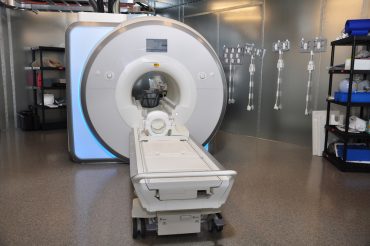
Supply chains need to embrace advances in technology, data, and analytics if they wish to become customer-centric and address customer needs in real-time.
The constantly changing geo-political, environmental, internal, and external dynamics are stressing supply chains. Operations are getting derailed due to reduced manpower or machines breaking down, impacting production. Changing lifestyles and affinity of customers are making it hard to predict and address customer demands, adversely impacting bottom lines. It is here that real-time analytics scores big over traditional, static analytics helping businesses draw instant and constant business value. This article demonstrates how new-age practices such as demand-sensing, decision intelligence, and edge analytics powered by technologies such as AI/ML are delivering real-time analytics to make supply chains more resilient, operations more efficient, and customers more subservient.
Making supply chains resilient through Demand Sensing
A study by IHL found that retailers lose as much as $1 trillion due to stock unavailability. It also highlighted that shoppers are left in the lurch once every three shopping trips due to the unavailability of stock. Demand volatility is a challenge most businesses are grappling with regularly. Demand forecasting, the traditional way of predicting demand by looking at historical data, has been the go-to solution to fill in this lacuna, but it leaves behind volumes of data that may have an impact on demand. For data-mature supply chains that have successfully integrated warehouse management systems drawing data from operational and customer sources and further from the multitude of vendors, suppliers, and stakeholders, the Demand Sensing solution has emerged as the most viable solution to accurately predict demand.
Demand sensing powered by contemporary technologies such as AI/ML, new mathematical techniques, and real-time data is more robust, reliable, and responsive than traditional forecasting enabling businesses to act faster and address demand as it evolves.
Nike has embraced Demand Sensing to reduce lead times significantly by integrating its warehouse management and supply chains. It collects real-time data from all operations and disciplines, selecting vendors and suppliers that support demand sensing and works with them to collect data and make product replenishment as fast and efficient as possible. Demand sensing is not just helping predict and meet the demand, and it is helping Nike sell more merchandise at regular prices without having to offer discounts.
Demand sensing is also significantly impacting the B2B sector, which is embracing the concept of lean manufacturing that looks to minimize wastage and maximize productivity within tight timelines. Walmart, the North American retail giant, has begun charging suppliers that do not meet specifications, and often narrowly defined, delivery schedules.
See also: A Call for End-to-End Data Analytics Supply Chains
Drive the operational efficiency through Decision Intelligence
Demand sensing provides the template on what exactly to expect, but to capitalize and act on this learning, you need acumen that propels you in real time. There are many instances where a delayed decision can be a setback for supply chains both strategically and economically.
The usual and standard practice among supply chain executives is to create schedules for some typical factors such as manpower, production, and deliveries. In real-life scenarios, these factors are highly volatile. Manpower can report in sick, or natural calamities can impact transport routes and timelines, and production can get derailed due to the unavailability of resources. Decision Intelligence is the perfect resort for supply chains in such scenarios as it helps to flag impending problems and provides data-based labor scheduling ideas to address labor shortages. Advise on the best possible transport routes to avoid delays or interruptions or suggest measures to keep the production on track.
Decision Intelligence, in simple terms, is the digitization, augmentation, and automation of decision-making powered by a set of technologies that enable businesses to make real-time decisions inferring recurring decisions made over time by applying decision logic. It is an important ability as decisions have become more complex and multi-dimensional and have to be made closer to the point of impact and in real time. It is also a must-have to drive agility and scale in decision-making and set up a digitized, automated system that powers accuracy and improvement in decision-making over time.
The impact of Decision Intelligence is not just confined to scheduling. It can significantly impact capacity planning by predicting variability and recommending real-time improvement to utilize capacity optimally. Improve efficiency by collecting and correlating the most accurate data possible about what goods are being loaded, where, and when. Evaluate the available real-time data to offer recommendations that practitioners can use to ensure the maximum capacity of containers when leaving the docks. Decision Intelligence keeps costs in check, enhances customer experience, and enables better forecasting accuracy to quickly launch and retire products reducing excess inventory whilst optimizing stock.
See also: 5 Ways Analytics Are Disrupting Supply Chain Management
Bolster your analytical abilities on the edge
Complimenting Demand Sensing and Decision Intelligence is the ability to make decisions close to the original source of information. Edge computing and its binary edge analytics enable supply chains to process, communicate, and store data at the point of data capture to create even workflows, distribute data capacity and streamline real-time responses powering agility in decision-making. Supply chains are becoming more dynamic, with data emanating from multiple sources – operators, machines, sensors, or devices. Edges, as physical locations, help people, data, and things to connect.
The complexity and uncertainty that shrouds supply chain operations and the involvement of multiple stakeholders across the globe makes it quite a task to have visibility across the chain. Supply chains to overcome this challenge are integrating edge computing capabilities to integrate software that are low on investment and high on performance, powering agility and efficiency across the chain. As per Gartner, 25% of supply chain decisions will be made across intelligent edge ecosystems through 2025, and 75% of organizations will adopt some form of edge computing solution by 2026.
Edge computing propelled by improved 5G networks works as an enhancer for computing power, performance, and reliability. It powers warehouse automation and automated material handling, including real-time tracking and tracing of assets to avoid blind spots in the supply chain ensuring minimal system downtime and revenue losses. Warehouse operations that are undergoing significant transformation backed by robotic automation in the form of intelligent intralogistics is an apt use case that rightly demonstrates edge computing capabilities.
Edge computing and analytics deliver real-time visibility for supervisors, supply chain managers, and others, keeping them abreast about the exact inventory that is present in their facility.
Garnering impressive business value in real-time
Traditional supply chain practices that derive from standard approaches do not align with contemporary demands and needs. Supply chains need to embrace advances in technology, data, and analytics if they wish to become customer-centric and address customer needs in real-time. Demand Sensing and Decision Intelligence carried out on Edge Platforms is paving the way for supply chains to operate and deliver in real-time, meeting evolving customer expectations as they arise and enabling supply chains to optimize efficiencies and revenues across the value chain.





























